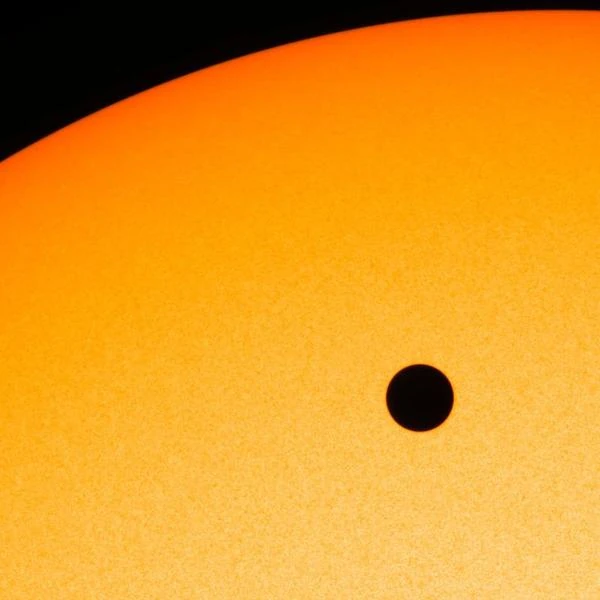
The Venus transit is an astronomical event in which the planet passes directly between the Earth and the Sun, appearing as a small black dot slowly moving across the solar disk. The transit of June 5-6, 2012 was one of the most anticipated events of the 21st century. It only occurs in pairs separated by eight years, with more than a century between each pair. The previous one occurred in 2004, and the next will not take place until December 2117.
The Venus transit does not occur every time Venus passes between the Earth and the Sun. However, as Venus is an inferior planet (its orbit is inside that of the Earth), it regularly passes between us and the Sun during its inferior conjunction. However, the Sun, Earth, and Venus must be perfectly aligned in the same plane for a transit to be visible. And this is almost never the case. Why? Because of the orbital inclination of Venus.
The orbit of Venus is inclined by about 3.4° relative to the plane of the ecliptic, which is the plane of the Earth's revolution around the Sun.
Thus, even when Venus is between the Earth and the Sun (inferior conjunction), it is generally above or below the solar disk as seen from Earth. Therefore, there is no visible transit.
Transits can only occur when Venus passes near one of its two "nodes": the points where its orbit crosses that of the Earth (the plane of the ecliptic). These nodes are fixed relative to the stars (modulo the very slow precession of the nodes), and transits can only occur when:
This double condition is rarely met.
Because the orbital periods of the Earth (365.25 days) and Venus (224.70 days) are not simple integer multiples. It takes several cycles for a similar alignment to recur. Every 243 years, a complete cycle repeats, with a pair of transits spaced 8 years apart (like in 2004 and 2012), followed by 121.5 years without a transit, then a new pair, then 105.5 years, etc.

Historically, Venus transits have allowed the measurement of the distance between the Earth and the Sun using the parallax method, notably during the transits of 1761 and 1769. In 2012, although the Earth-Sun distance was already known with great precision, the event was used to test exoplanet observation techniques and refine our understanding of planetary atmospheres. The transit also allowed revisiting a well-known effect: the "black drop" — an apparent deformation of Venus when it enters or exits the solar disk, due to optical effects in the Earth's and Venus's atmospheres.
In the 18th century, scientists like Halley hoped to use transits to determine solar parallax with extreme precision by timing the exact moments of contact. But the black drop made it impossible to measure these moments precisely, introducing a systematic error of several seconds, which resulted in significant uncertainties in astronomical distances. The "black drop" is a visual artifact that reveals the complexity of astronomical observation, combining diffraction, refraction, turbulence, and the physiology of vision.
In 2012, high-resolution observations made from space (for example, with the HINODE satellite or the Solar Dynamics Observatory) allowed: